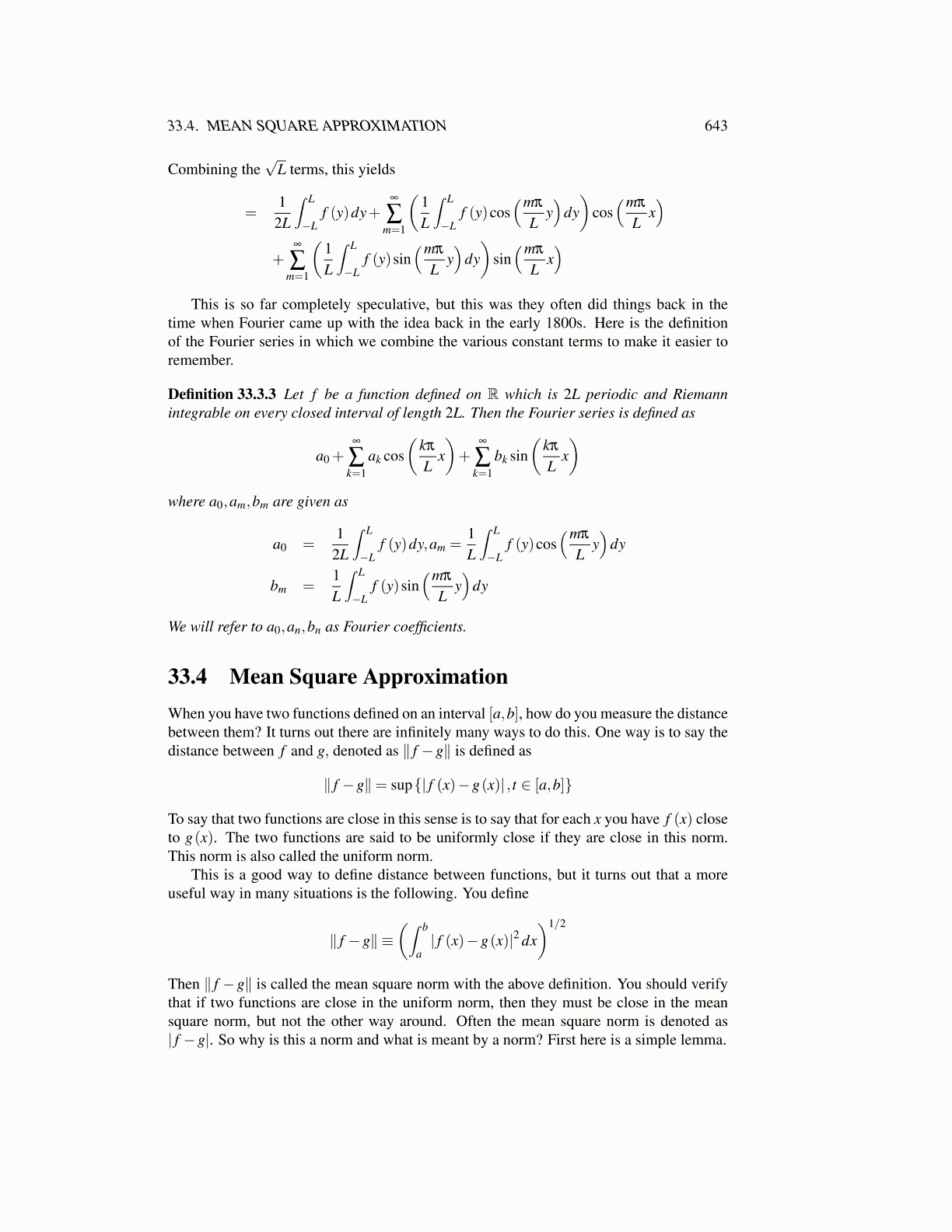
33.4. MEAN SQUARE APPROXIMATION 643
Combining the√
L terms, this yields
=1
2L
∫ L
−Lf (y)dy+
∞
∑m=1
(1L
∫ L
−Lf (y)cos
(mπ
Ly)
dy)
cos(mπ
Lx)
+∞
∑m=1
(1L
∫ L
−Lf (y)sin
(mπ
Ly)
dy)
sin(mπ
Lx)
This is so far completely speculative, but this was they often did things back in thetime when Fourier came up with the idea back in the early 1800s. Here is the definitionof the Fourier series in which we combine the various constant terms to make it easier toremember.
Definition 33.3.3 Let f be a function defined on R which is 2L periodic and Riemannintegrable on every closed interval of length 2L. Then the Fourier series is defined as
a0 +∞
∑k=1
ak cos(
kπ
Lx)+
∞
∑k=1
bk sin(
kπ
Lx)
where a0,am,bm are given as
a0 =1
2L
∫ L
−Lf (y)dy,am =
1L
∫ L
−Lf (y)cos
(mπ
Ly)
dy
bm =1L
∫ L
−Lf (y)sin
(mπ
Ly)
dy
We will refer to a0,an,bn as Fourier coefficients.
33.4 Mean Square ApproximationWhen you have two functions defined on an interval [a,b], how do you measure the distancebetween them? It turns out there are infinitely many ways to do this. One way is to say thedistance between f and g, denoted as ∥ f −g∥ is defined as
∥ f −g∥= sup{| f (x)−g(x)| , t ∈ [a,b]}
To say that two functions are close in this sense is to say that for each x you have f (x) closeto g(x). The two functions are said to be uniformly close if they are close in this norm.This norm is also called the uniform norm.
This is a good way to define distance between functions, but it turns out that a moreuseful way in many situations is the following. You define
∥ f −g∥ ≡(∫ b
a| f (x)−g(x)|2 dx
)1/2
Then ∥ f −g∥ is called the mean square norm with the above definition. You should verifythat if two functions are close in the uniform norm, then they must be close in the meansquare norm, but not the other way around. Often the mean square norm is denoted as| f −g|. So why is this a norm and what is meant by a norm? First here is a simple lemma.